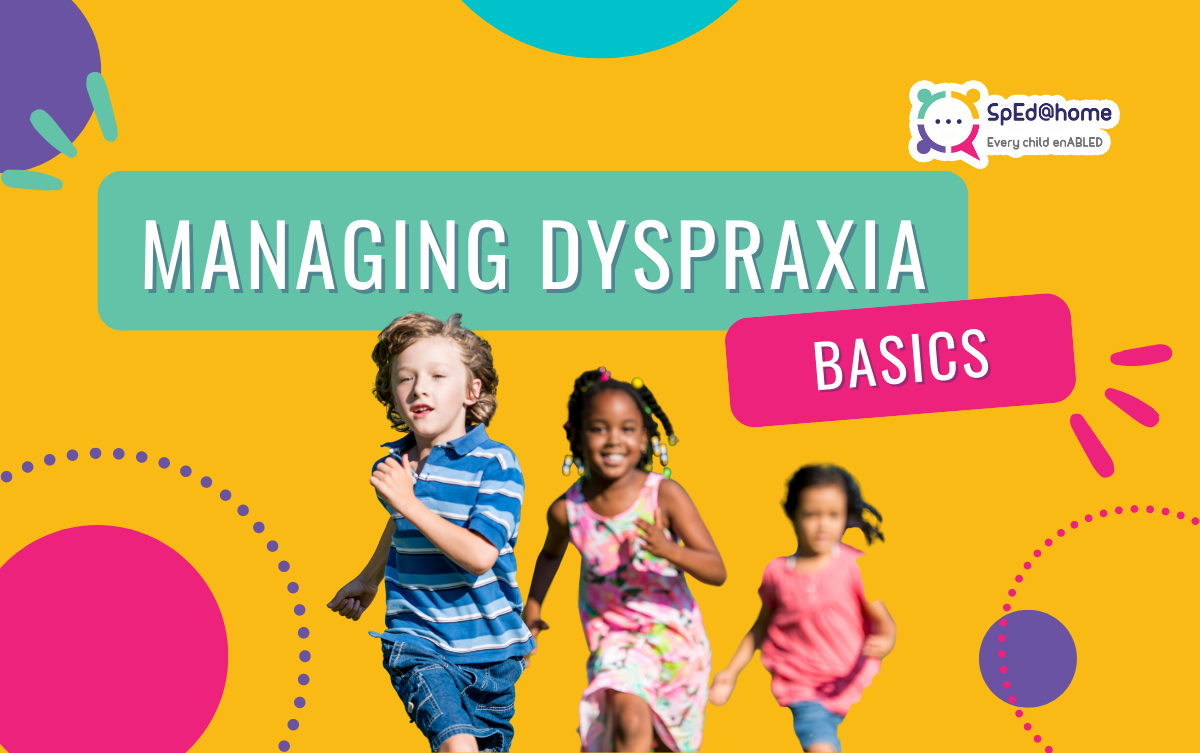Dyspraxia involves having difficulties with movement and coordination. This leads to problems like failing to be organized or following instructions in school. It also leads to them falling behind their peers and feeling low on confidence. This development disorder is caused due to a breakdown of messages transferred from the brain to the body affecting the child’s ability to coordinate and execute body movements.
A lot has been said about Dyspraxia but the most notable is herewith- “Dyspraxia is on a spectrum, so some learners will be more severely affected than others and Dyspraxic individuals will tend to have multiple symptoms rather than a whole gamut of attributes. Each learner with dyspraxia is unique and effective strategies will vary between individuals.”
Helping a child through their symptoms can be quite challenging. That’s why we have compiled some tips that can help when dealing with a Dyspraxic child.
Start early
Dyspraxia starts during early childhood, and can be identified if the child shows symptoms like delays with sitting up, talking, walking, or toilet training. If these symptoms are recognized before the age of two, parents and children can seek early intervention for Dyspraxia.
Practice skill activities
When faced with learning new and challenging tasks or skills, children with Dyspraxia often require opportunities to practice these skills. This can be accomplished by showing and telling the child exactly how the task is done. This can take time, so it is essential not to lose patience while the child is struggling and to nurture them with patient and support.
Playing can help manage the discomfort
Dyspraxic children can have problems making friends in school which can be a source of frustration and isolation. The increased time they take in learning skills used in sports such as running or catching a ball can also result in them leading a less active lifestyle. Hence, one important way of supporting children with Dyspraxia is to play beginner level and easy games at home and in class to encourage social interaction.
Breaking down and repeating instructions
It is also helpful if Dyspraxic children are given simple instructions one step at a time, instead of burdening them with too much information. Instructions must also be repeated to ensure that children understand what to do. Start with simple tasks and gradually increase the difficulty level of the same.
Focus on strengths
This is especially important for children with Dyspraxia. Playing on the child’s strength can help ensure that they are motivated and able to do their best in certain tasks, instead of expecting them to perfect all skills.
Recognise and act
Depending on the severity of Dyspraxia, medical intervention may also be necessary. If left untreated, a Dyspraxic child will have confidence issues, might face bullying, anxiety, and stress which exceeds as they grow older and have to be more independent. Your child must be referred to an expert so that they can find their way out of challenging situations throughout their life.
Lastly, and most importantly,
Therapy
Seek therapy for your child. Occupational therapy is an essential tool when it comes to helping children with Dyspraxia. These not only help the child in mastering certain basic skills but also keeps the child active and motivated in their daily life.
However, it is recommended to opt for an Assessment before your begin with any kind of therapy. Talk to our experts about this. Get in touch for a FREE assessment.














